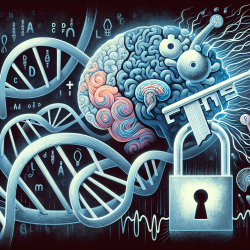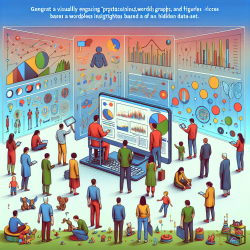Understanding the Genetic Underpinnings of Autism Spectrum Disorder
As practitioners dedicated to improving the lives of children with Autism Spectrum Disorder (ASD), it is imperative to stay informed about the latest research that can inform our therapeutic approaches. A recent study titled "Phenotypic and Molecular Convergence of 2q23.1 Deletion Syndrome with Other Neurodevelopmental Syndromes Associated with Autism Spectrum Disorder" sheds light on the genetic intricacies that could revolutionize our understanding and treatment of ASD.
Key Findings from the Research
The study highlights the 2q23.1 deletion syndrome, a genetic disorder linked to ASD, characterized by severe intellectual disability, seizures, and significant speech impairment. The causative gene, MBD5, plays a pivotal role in this syndrome. The research provides a comprehensive phenotypic update and explores the molecular relationships between 2q23.1 deletion syndrome and other neurodevelopmental disorders associated with ASD.
Key findings include:
- Phenotypic overlaps with other syndromes such as Rett, Angelman, and Smith-Magenis, which share common features like intellectual disability, speech delay, and autistic-like behaviors.
- MBD5's potential role in regulating the expression of other genes associated with ASD, such as UBE3A, TCF4, MEF2C, EHMT1, and RAI1.
- Network analysis revealing indirect protein interactions, suggesting common pathways that could be targeted for therapeutic intervention.
Implications for Practitioners
For practitioners, these findings underscore the importance of considering genetic factors in the diagnosis and treatment of ASD. By understanding the molecular pathways involved, we can develop more targeted therapies that address the root causes of the disorder rather than just the symptoms.
Implementing these insights into practice could involve:
- Utilizing genetic testing to identify specific syndromes and tailor interventions accordingly.
- Collaborating with geneticists to better understand the complex genetic landscape of ASD.
- Staying informed about emerging research to continually refine therapeutic approaches.
Encouraging Further Research
This study opens the door to numerous avenues for further research. Understanding the molecular and network relationships among ASD-associated genes could lead to breakthroughs in therapeutic strategies. Practitioners are encouraged to engage with ongoing research and contribute to the growing body of knowledge in this field.
To read the original research paper, please follow this link: Phenotypic and Molecular Convergence of 2q23.1 Deletion Syndrome with Other Neurodevelopmental Syndromes Associated with Autism Spectrum Disorder.










